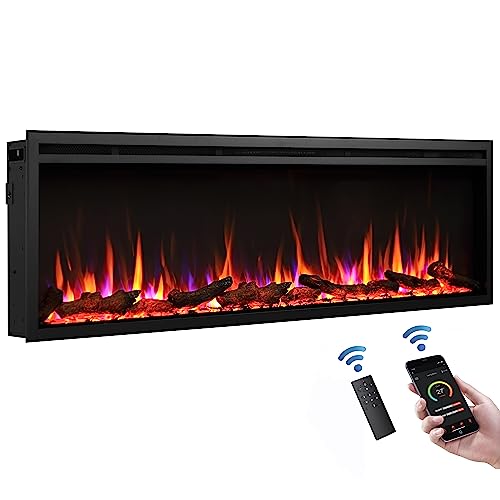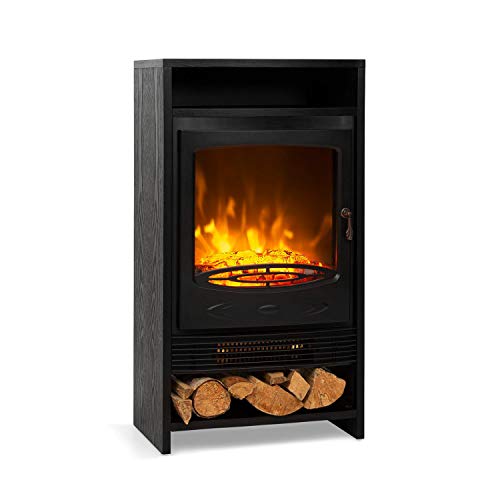What's The Current Job Market For Bioethanol Fireplace Professionals L…
페이지 정보

본문
 The Benefits of an Ethanol Fireplace
The Benefits of an Ethanol FireplaceEthanol fireplaces can be a fantastic alternative to gas or wood fires since they don't require the use of a chimney or a flue. They also don't produce any smoke or ash and can be easily moved between homes.
Use bio-ethanol only on burners designed to burn the fuel. Other gels and liquid fuels can void the warranty on your burner.
Cost
The price of a bioethanol fire place varies depending on the type and style you choose. There are models ranging from a few hundred dollars to a few thousand dollars, but they are usually less expensive than a wood or gas fireplace. Certain models are freestanding, while others can be attached to a fireplace or built into the wall. Ethanol fires are also more ecologically friendly than their wood-burning counterparts.
Bioethanol fires are popular because they provide a beautiful, natural flame without any smoke or soot. They can be used almost anywhere and are easy to maintain. However, you should only use bioethanol fuel that is specifically made for use with these fireplaces. Other kinds of fuel can damage the burner and increase the risk of fire. In addition, you should not keep flammable items near the bioethanol fire.
Ethanol fireplaces are fantastic for heating rooms, but they should not be relied on as your primary source of heat. They are much more efficient than wood-burning fireplaces and can generate a substantial amount of heat - about 2kW in average. This is not enough to heat a whole house, but it will certainly assist in warming the smallest of rooms.
In addition to the actual expense of an ethanol fireplace, you will need to consider other costs associated with maintaining the fireplace. The fireplace should be stored in a safe location away from children and pets. Follow the manufacturer's guidelines when adding fuel, extinguishing the flame and allowing the heater to cool.
A ethanol fireplace is a great alternative to traditional wood-burning stoves or an electric fireplace fire. The major benefit of this fire is that it does not require a chimney, meaning you can save money on the installation and maintenance costs. Additionally, it is safer to use than many other fireplaces wood. However, it's recommended to consult a professional before making the final decision. You can be certain that the fireplace will be properly and safely installed.
Environmental impact
A fireplace made of ethanol is a greener alternative to traditional fireplaces that burn wood. It makes use of bioethanol fuel which is created by the fermentation of sugar and starch elements of materials from plants such as straw, corn, and maize. The biofuel liquid undergoes further distillation to make it burn cleanly and efficiently. This kind of fuel is thought to be a renewable energy source and does not emit harmful emissions or odours. It is free of soot and smoke, making it an ideal choice for your home than other kinds of fires.
They can be put in any space in your home, as they do not require venting or chimneys. They are easy to operate, and most models have at least one remote control. A majority of them also have an inbuilt cooling system to prevent the fuel from overheating. They can be used either as a primary source of heating or as an additional heating unit. They can also be a good option for those who live in condominiums or apartments.
Bioethanol fireplaces produce low levels of odours, which makes them an excellent choice for homes that have people suffering from allergies or asthma. This type of fireplace is safe to use in a nursery or a child's room. These wooden fireplaces must be kept away from any flammable objects like curtains or furniture.
One of the greatest benefits of an ethanol fireplace is its ease of use. It is easier to install than a wood-burning fireplace and doesn't require complicated electrical connections or installation. The liquid fuel can also be stored in a portable container to allow it to be easily moved from one room to another. This allows you to enjoy a fireplace's warmth without the mess of chopping up, stacking and cleaning up the wood.
A bioethanol fireplace produces a minimal amount of pollution. This makes it an ideal choice for those who are concerned about the environment. These fireplaces also can help you save energy and money.
Safety
A bioethanol fireplace is a safe alternative to an open fire. They burn cleanly, produce less smoke than other alternatives and are easy to use. However, as with all fireplaces and other fire-producing appliances, they can be dangerous if not used correctly. These fireplaces require particular attention and care, which is why it is important to read the directions carefully and follow them closely.
If you're using a bioethanol fireplace make sure you place it in a room that is well-ventilated and away from any other fire-prone materials. Keep children and pets far away from the fire. Do not move it while the fire is still burning. This could cause an explosion.
Bioethanol fireplaces aren't as dangerous as gas or wood fireplaces, however there are safety guidelines to follow to ensure a safe operation. These include keeping flammable items at least 1500mm from the flame and not touching it when the flame is burning. It is also important to never refill a fire with non-approved fuel.
The burning process of bio-ethanol fire places is safe, especially if you follow the instructions. The fuel is pumped through a vapour-accelerator, which evaporates and is then ignited by a filament. This method of combustion ensures the fuel is completely burned, removing smells and harmful substances such as dioxins or furans.
Ethanol fireplaces are dangerous when they are not used correctly, so it's important to follow the manufacturer's instructions when installing and operating them. They should also be kept away from flammable materials, such as curtains and newspapers. They should be kept a safe distance from other household appliances and should not be placed near children or sleeping animals.
The primary benefit of a bioethanol fireplace is that it doesn't produce any odour or harmful fumes and is an extremely safe option for families with children or pets. They are also easier to utilize than traditional fireplaces since they do not require a chimney and don't trigger carbon monoxide poisoning. These fireplaces also offer many advantages, including a flexible installation space and the ability to move them around easily.
Installation
A bioethanol fireplace is an excellent method to add ambiance and warmth to a space. They come in a variety of designs and can be set up in a number of ways. They can be wall-mounted freestanding, or built-in. You must always read the installation manual for a fireplace prior to installing it. This will ensure that you don't encounter any issues in the installation and your fireplace can be used safely.
The installation of a bioethanol fireplace is fairly simple. It involves installing the burner and constructing a frame into the wall. The frame should be constructed from a material that is not fire-proof. This will prevent the flame from burning your wall. It also prevents the flame from spreading to other areas of the room. The frame must be secured to the wall with appropriate screws and dowels.
In contrast to other kinds of fireplaces, ethanol fires don't require a chimney or flue. This makes them a more affordable option for homeowners. They can also be put in any space and easily moved. Moreover, they do not produce any harmful emissions.
When used correctly, a bioethanol fireplace is very secure. However, as with all fires, they must be kept away from any surfaces that could ignite and children. The fuel should be stored in a safe area and the fire should be put out before refueling.
Ethanol fireplaces are easy to maintain and do not produce ash or soot. They are a great choice for bioethanol Fire those worried about the impact on the environment that traditional wood-burning ones. Ethanol-fueled fireplaces are a great alternative to gas or electric fireplaces.
 While bioethanol fireplaces are an excellent addition to any home but they shouldn't be used as a primary source of heat. They are designed to add warmth and create a cozy ambiance however they aren't strong enough to provide the warmth needed for the entire house. The best way to install a bioethanol fireplace is to employ an expert to complete the task.
While bioethanol fireplaces are an excellent addition to any home but they shouldn't be used as a primary source of heat. They are designed to add warmth and create a cozy ambiance however they aren't strong enough to provide the warmth needed for the entire house. The best way to install a bioethanol fireplace is to employ an expert to complete the task.- 이전글10 Wood Burning Stove-Friendly Habits To Be Healthy 25.02.06
- 다음글Guide To Upvc Front Door Repairs: The Intermediate Guide The Steps To Upvc Front Door Repairs 25.02.06
댓글목록
등록된 댓글이 없습니다.


